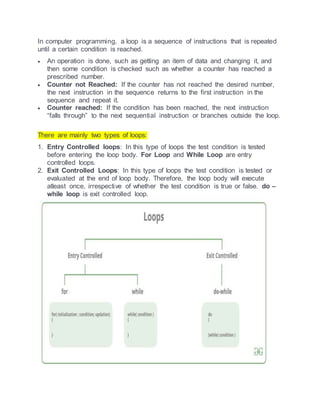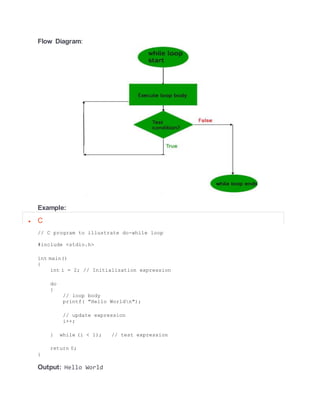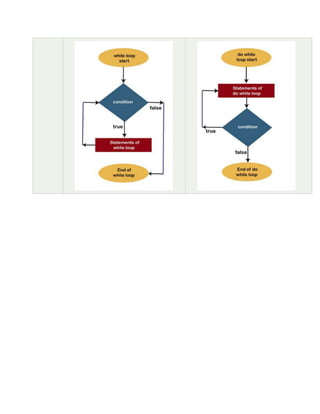The document discusses different types of loops in computer programming including for, while, do-while, and infinite loops. It provides examples of using each loop type to print "Hello World" multiple times and explains the key differences between while and do-while loops. While loops check the loop condition first before executing the body, whereas do-while loops always execute the body at least once before checking the condition. Infinite loops occur when the loop condition is never false, causing the loop to repeat indefinitely until terminated.












